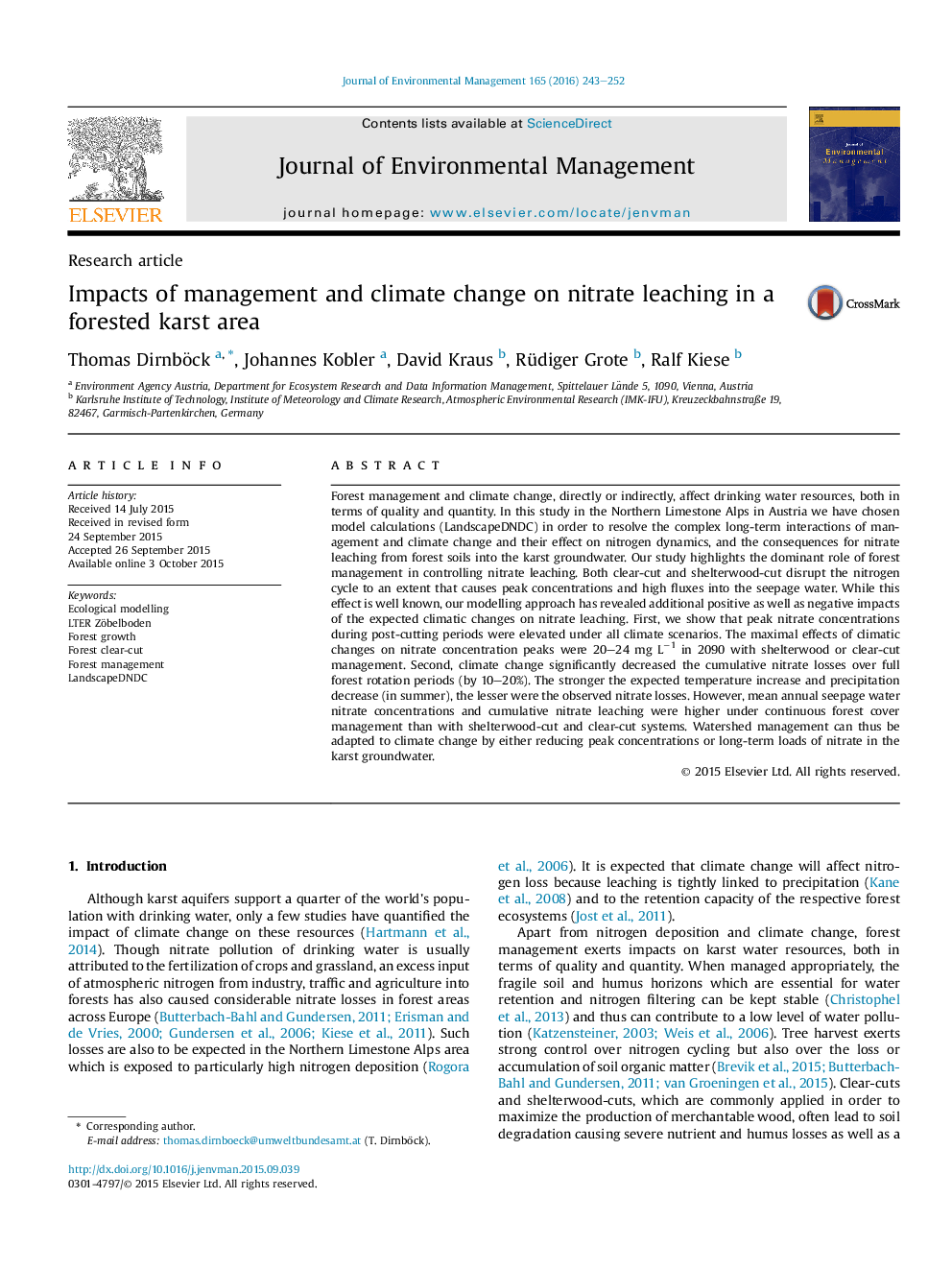| کد مقاله | کد نشریه | سال انتشار | مقاله انگلیسی | نسخه تمام متن |
|---|---|---|---|---|
| 1055495 | 1485247 | 2016 | 10 صفحه PDF | دانلود رایگان |
• We used a model for forest management and climate change effects on nitrate leaching.
• Peak nitrate concentration was elevated under climate scenarios.
• Climate change significantly decreased cumulative nitrate losses.
• Cumulative nitrate leaching was highest under continuous forest cover management.
• Managers can either reducing peak concentrations or long-term loads of nitrate.
Forest management and climate change, directly or indirectly, affect drinking water resources, both in terms of quality and quantity. In this study in the Northern Limestone Alps in Austria we have chosen model calculations (LandscapeDNDC) in order to resolve the complex long-term interactions of management and climate change and their effect on nitrogen dynamics, and the consequences for nitrate leaching from forest soils into the karst groundwater. Our study highlights the dominant role of forest management in controlling nitrate leaching. Both clear-cut and shelterwood-cut disrupt the nitrogen cycle to an extent that causes peak concentrations and high fluxes into the seepage water. While this effect is well known, our modelling approach has revealed additional positive as well as negative impacts of the expected climatic changes on nitrate leaching. First, we show that peak nitrate concentrations during post-cutting periods were elevated under all climate scenarios. The maximal effects of climatic changes on nitrate concentration peaks were 20–24 mg L−1 in 2090 with shelterwood or clear-cut management. Second, climate change significantly decreased the cumulative nitrate losses over full forest rotation periods (by 10–20%). The stronger the expected temperature increase and precipitation decrease (in summer), the lesser were the observed nitrate losses. However, mean annual seepage water nitrate concentrations and cumulative nitrate leaching were higher under continuous forest cover management than with shelterwood-cut and clear-cut systems. Watershed management can thus be adapted to climate change by either reducing peak concentrations or long-term loads of nitrate in the karst groundwater.
Journal: Journal of Environmental Management - Volume 165, 1 January 2016, Pages 243–252
